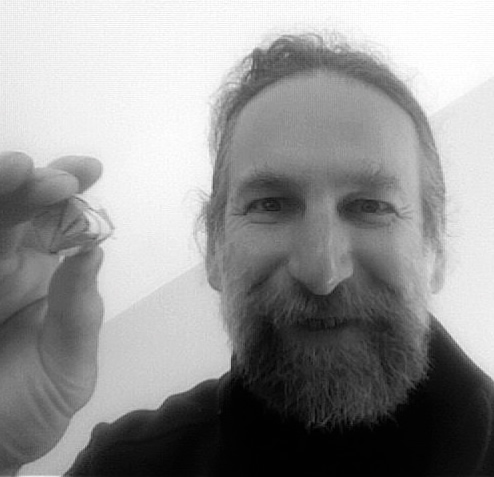
Mark D Gross is a professor of computational design at Carnegie Mellon University’s School of Architecture. He first became entranced with a PDP-8 computer as a boy and learned to program by studying assembly language listings of compilers and interpreters written by virtuoso designer/programmers at Digital Equipment Corporation (DEC). He became interested in artificial intelligence and cognitive science when it was possible to read almost everything written on the subject. Gross studied architectural design at MIT and graduated in 1978 with a Bachelor of Science degree. While a student he worked at the Architecture Machine Group, where he met design methodologist N. John Habraken, who later supervised his PhD work. Before entering the PhD program in architecture, Gross worked as a programmer at the MIT Logo Laboratory on a version of the Logo programming language for children, and then at Atari Corporation’s Cambridge research lab. In 1986 he completed his PhD in design theory and methods at MIT, working with Professors Habraken and Aaron Fleisher; the title of his dissertation is “design as exploring constraints”.
In 1990 Gross began teaching at the University of Colorado, Boulder and in 1999 he moved to the University of Washington, Seattle. where he co-founded the Design Machine Group, a design computing research laboratory. In 2004 he joined the faculty of the School of Architecture at Carnegie Mellon where he supervises PhD students in computational design and directs a Master program in Tangible Interaction Design. Mark D Gross worked on a constraint model of—and a programming language for—design; on diagram and sketch recognition; and tangible user interfaces. In recent work on computationally enhanced construction kits and craft, his students have built prototypes of innovative constructionist toys. Based on this research, Gross recently co-founded roBlocks LLC, a company to manufacture and distribute a modular robot construction kit toy for children to experiment with emergent behavior and robot design. Fundamental to all his work is a commitment to empowering end-users to design and extend their own environments; this is a theme common to the architectural design methods of Habraken and the children’s programming language Logo. Gross sees pro.gramm.ing and de.sign as much the same, and notes that the roots of the two English words are closely related, and he cannot understand why the rest of the world insists on boundaries between domains.